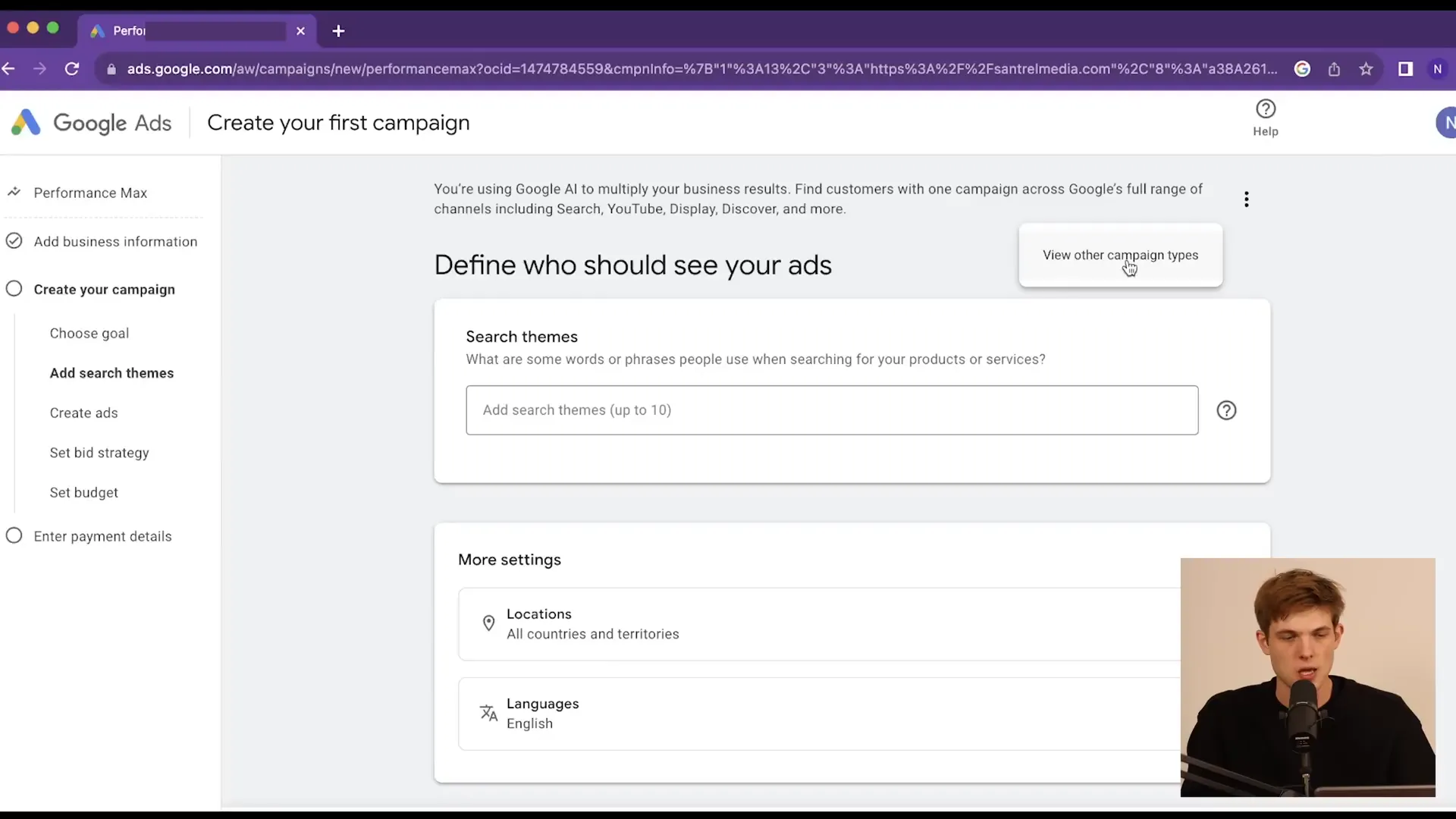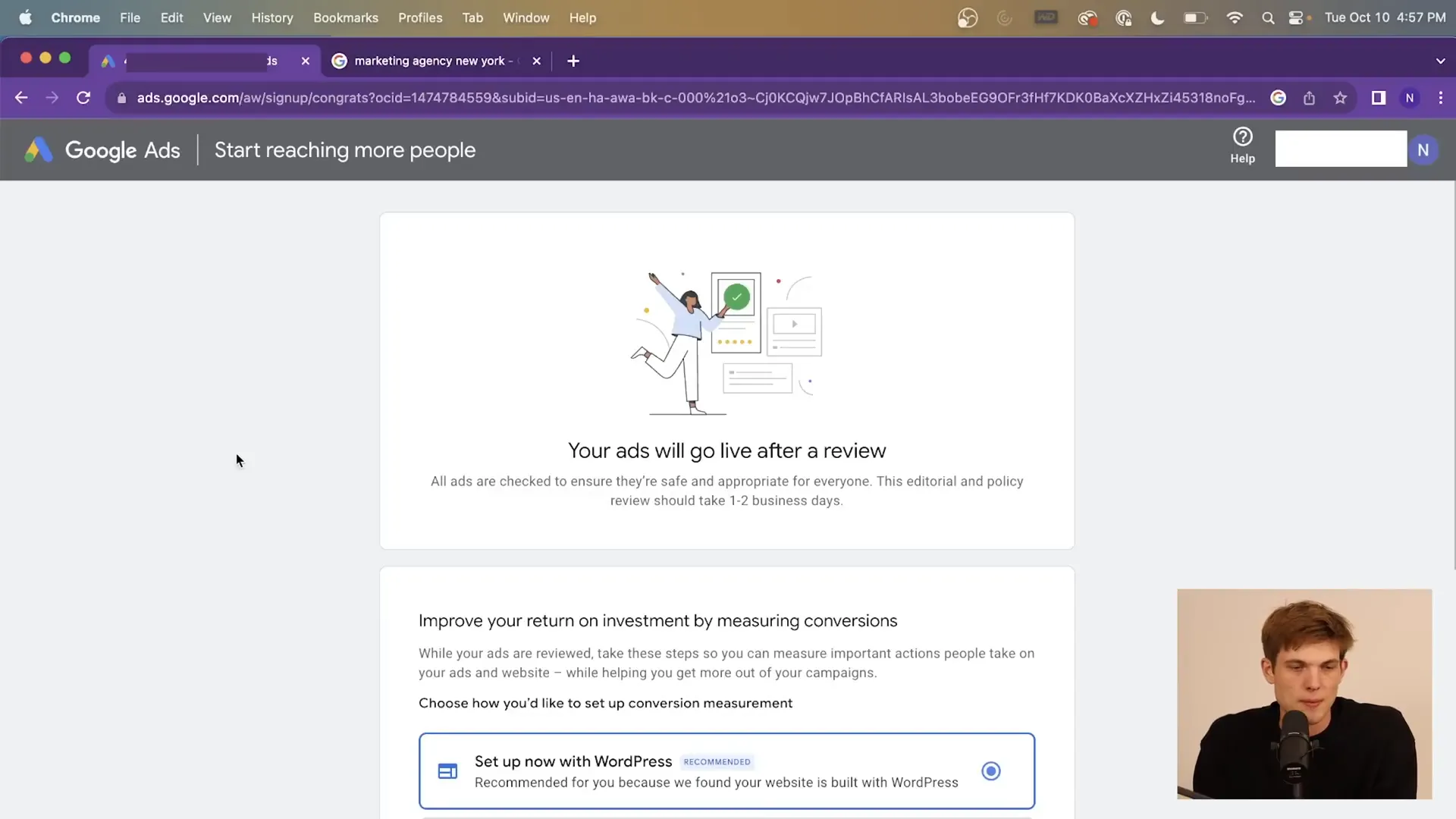Google Ads Tutorial 2024 (Step by Step) How To Use Google Ads
Google Ads can seem overwhelming, especially with their constantly changing interface. However, with the right guidance, you can set up effective campaigns that attract customers in a cost-effective manner. This guide will walk you through the process of setting up campaigns, ad groups, and optimizing your ads for maximum impact.
Getting Started with Google Ads
To begin, navigate to ads.google.com. The first step is to create your campaign. You’ll enter your business name and website to get started. For this example, let’s say we’re creating an ad for a marketing agency called “Central Media”.

Once you enter your details, you’ll have the option to link various accounts, such as your YouTube channel or Google Business profile. While this can be useful for running diverse ad types in the future, it’s perfectly fine to skip this step for now.
Defining Your Campaign Goals
Next, you’ll need to identify the goal of your campaign. Google provides several options, including:
- Purchases: Ideal for e-commerce or service-based businesses.
- Lead Generation: Useful for local service businesses wanting to collect contact information.
- Brand Awareness: Focused on getting your name out there.
For our example, we’ll select “Purchases” since we’re promoting services from our marketing agency. After selecting your goal, click “Next” to proceed.

Choosing the Right Campaign Type
Google often defaults to their Performance Max campaign type, which runs ads across all networks. While this can be convenient, it’s often better to focus on one ad type to optimize your efforts. Click on the three dots to view other campaign types. We recommend starting with Search Ads, as they are most commonly associated with Google Ads.

Selecting Keywords
Keywords are essential for ensuring your ads appear in relevant searches. Google will suggest keywords based on your website, but you should tailor these to fit your specific needs.
There are three types of keyword matches:
- Broad Match: Your ad can show for variations of your keyword.
- Phrase Match: Your ad will show when the search includes the exact phrase.
- Exact Match: Your ad will only show for the exact keyword.
For example, if you want to target “Marketing Agency Philadelphia”, you can choose broad match to capture a wider audience, or use exact match to target only those who search that specific term.

Setting Location and Audience Targeting
When setting your target locations, remember that broader markets typically have lower costs per click. For instance, targeting Pennsylvania and New York may be more cost-effective than focusing solely on New York City.
You can also exclude areas where you don’t want your ads to show. Additionally, consider audience segments based on demographics, interests, or behaviors to refine your targeting.

Creating Your Ad
Now it’s time to create your ad. You’ll enter your website URL and the display path, which is what users will see when they click on your ad. Then, you’ll fill out your headlines and descriptions.
When crafting your ad copy, don’t feel pressured to create the perfect ad on the first try. Instead, focus on getting something out there. You can always refine it later through A/B testing. This process involves running different versions of your ad to see which performs better.

Choosing Your Bid Strategy and Budget
Next, you’ll need to set your bid strategy. Google recommends focusing on conversions, but if you’re just starting out, you might want to go with clicks. Set a maximum cost-per-click bid limit based on what you’re willing to spend.
When it comes to budgeting, start small. Google might suggest a high daily budget, but it’s crucial to set a manageable amount, such as $20 a day. This helps you gather data without overspending initially.

Finalizing Your Campaign
After entering your payment information, your ads will undergo a review process. Typically, this takes a day or two. Once approved, you can start tracking conversions and optimizing your ads based on performance.

Utilizing Google Ads Tools
Once your account is set up, take advantage of the various tools available in Google Ads. The Keyword Planner is particularly useful for discovering new keywords and understanding search volumes. This tool can help you identify what potential customers are searching for and adjust your strategy accordingly.

Conclusion
Running Google Ads doesn’t have to be complicated. By following these steps and focusing on one ad type at a time, you can create effective campaigns that drive results. Remember, testing and refining your ads is key to long-term success. If you have questions or need assistance, feel free to reach out for help.
For additional resources, consider checking out TikTok Ads if you’re looking to expand your advertising strategy, or Tailor Brands for forming an LLC easily.
Made with VideoToBlog

1 comment